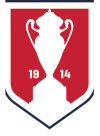Those who joined the ISU were in many ways treated the same as regular U.S. soldiers, being paid for their work and were eventually allowed to leave Camp Shanks on liberty. They were given uniforms similar to those worn by U.S. soldiers, the main difference being a patch on the sleeve that read Italy.
Entertainment and activity at the camp were a big part of life for both the U.S. soldiers and the members of the ISUs who, unlike other prisoners, were allowed to fraternize with the Americans. Stars of stage and screen Frank Sinatra and Jimmy Durante, as well as boxing legend Joe Louis, were among the celebrities who made visits. The week the Hispanos played the team from the ISU, baseball’s Boston Braves took on an Army team and Betty Grable and Ava Gardner, both Hollywood royalty, also made appearances.
Soccer, or calcio, was hugely popular in Italy following the country’s two World Cup wins in the 1930s under legendary manager Vittorio Pozzo. The game was already a passion for the Italians, but the match between the prisoners and Hispano was a step in making soccer a part of the Army’s athletic program.
Over 200 army brass attended the 1944 Open Cup Final at the Polo Grounds. According to the Brooklyn Eagle. Lieutenant L. Duke Slocum was so impressed with Hispano’s play in that year’s win over Morgan Strasser that he approached club manager Duncan Othen to not only bring the team to Camp Shanks for a game, but to help organize a formal league for the prisoners in the New York Area.
Although they struggled in the American Soccer League, surrendering their championship to the Philadelphia Americans after finishing fifth in the league, Hispano all but walked through to their second straight Open Cup title in 1944.
Hispano Take 1944 Open Cup by Storm
Their only real opposition came in the Second Round, from fellow ASL side Brooklyn Wanderers. The two teams needed three games and six overtime periods to break a logjam of two straight draws. Eventually, after a total of 360 minutes of play, Hispano advanced with a 3-2 win in the third game after four periods of extra-time.
The battle with the Wanderers proved to be epic, not only for a series which saw a total of 19 goals in the three contests, but because of rulings made as play proceeded. In the first game, Jose Aja, who scored three times, twice gave Hispano the lead only to see the score leveled. The Wanderers took a second half lead, but Aja netted his third for the equalizer. Because of the muddy conditions at Brooklyn Oval, it was decided no overtime would be played.















